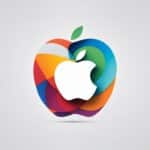Table of Contents
Technology and computing can often seem overwhelming with a plethora of technical terms thrown around. IO, short for Input/Output, is one such term that the average person may not be familiar with. In this quick guide, we will demystify the term IO and provide a clear understanding of what it means, especially in the context of computing.
IO is a key concept in technology, and it refers to the transfer of data between a computer system and external devices or networks. Whether you are a tech enthusiast or a professional, it is essential to understand the role of IOs in computing.
Key Takeaways
- IO stands for Input/Output and refers to the transfer of data between a computer system and external devices or networks.
- IOs play a vital role in computing by allowing data to be inputted from external sources and outputted to users or other devices.
- IOs can be categorized into input and output devices, both of which facilitate data transfer and interaction within computer systems.
- By understanding IOs’ functionality and significance in computing, we can appreciate their crucial role in ensuring efficient data processing and interaction.
- Knowing the different types and applications of IOs can help us choose the right device for a specific computing context.
Exploring the Functionality and Importance of IOs in Computing
Input/output (IO) devices are fundamental in computing. Their functionality is crucial in facilitating communication between a computer system and external devices or networks. Their role is to receive and transmit data that a user or system can process. By doing so, IO devices enhance the computing experience by enabling efficient input and output processes.
The importance of IOs cannot be overstated. They enable efficient transfer of data, which is vital in ensuring seamless communication and interaction between a computer system and external devices or networks. Without IOs, computing would be cumbersome, with limited interaction and exchange of vital data.
There are two types of IO devices; input and output devices. Input devices allow users to input data or commands into a computer system, while output devices deliver processed data to the user or other devices. Examples of input devices include keyboards, mice, scanners, and microphones. Output devices include monitors, printers, and speakers.
Functionality of IOs
IOs facilitate the transfer of data input from external devices and output processed data to the user or other devices. They ensure seamless integration of computer systems with external devices or networks by transmitting and receiving data efficiently. IO devices also allow for multitasking by permitting input and output processes to occur simultaneously.
Importance of IOs in Computing
IOs play a vital role in computing by enabling efficient data processing, interaction, and transfer. They promote better communication between computer systems and external devices or networks, making it easier for users to interact with the system and enhancing the overall computing experience. By understanding the significance of IO devices, technicians and enthusiasts can optimise their computing systems, ensuring seamless data flow and processing.
Different Types of IOs and Their Applications
In computing, IO devices facilitate communication between a computer system and external devices or networks. IOs can be categorized as input or output devices, depending on their function. Input devices allow users to interact with the computer system by transmitting data or commands, while output devices deliver information or results from the system. Here are some examples of both input and output devices and their specific uses:
| Input Devices | Output Devices |
|---|---|
| Keyboard | Monitor |
| Mouse or touchpad | Printer |
| Scanner | Speakers |
| Microphone | Projector |
| Joystick or gamepad | Data projector |
Input devices are crucial when it comes to interacting with computer systems. For example, a programmer may enter code via a keyboard or receive commands from other devices using input devices. Output devices, on the other hand, are used to produce results, allowing end-users or other systems to consume processed data. Some examples of output devices include a monitor, printer, or speakers. In summary, IO devices play a pivotal role in computing, allowing seamless data transfer and interaction within computer systems, making them essential components in modern-day computing.
Conclusion
In conclusion, IOs play a vital role in computing by enabling the transfer of data between a computer system and external devices or networks. Understanding the functionality, types, and applications of IOs helps us appreciate their significance in ensuring efficient data processing and interaction. By demystifying the term IO, this quick guide has provided tech enthusiasts and professionals with a comprehensive understanding of this fundamental concept in computing.
FAQ
What is an IO?
An IO, which stands for Input/Output, is a fundamental concept within the realm of technology and computer systems. It refers to the process of transferring data to and from a computer system and external devices or networks.
What is the functionality of IOs in computing?
IOs play a crucial role in computing by facilitating communication between a computer system and external devices or networks. They enable the input of data from external sources and the output of processed data to the user or other devices, ensuring seamless data transfer and interaction within computer systems.
Why are IOs important in computing?
IOs are of great importance in computing because they ensure the efficient transfer of data between a computer system and external devices or networks. Without IOs, it would be challenging to interact with computers or perform tasks that involve inputting or outputting data.
What are the different types of IOs and their applications?
IOs can be classified into input and output devices. Input devices, such as keyboards, mice, and microphones, allow users to interact with the computer system by transmitting data or commands. Output devices, such as monitors, printers, and speakers, deliver information or results from the system. These different types of IOs have specific applications within various computing contexts.
How do IOs contribute to efficient data processing and interaction?
IOs contribute to efficient data processing and interaction by enabling the transfer of data between a computer system and external devices or networks. By facilitating the input and output of information, IOs ensure seamless data flow and enhance user experience with computers.
How can understanding IOs benefit tech enthusiasts and professionals?
Understanding IOs provides tech enthusiasts and professionals with a comprehensive understanding of this fundamental concept in computing. It allows them to effectively utilize and troubleshoot IO devices, leading to better performance and productivity in their computing endeavors.












